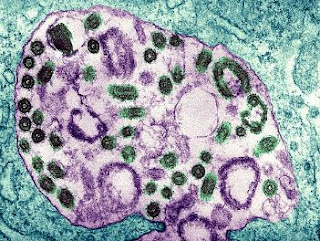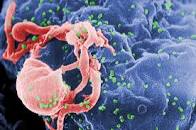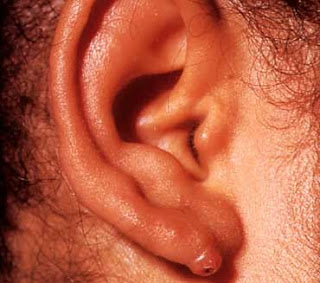The entire thing you have to think about stroke types of stroke stroke meaning
Stroke happens because of a reduction or blockage in the mind's blood flexibly. An individual encountering a stroke needs quick crisis treatment.
Stroke is the fifth driving reason for death in the United States. Truth be told, about 800,000 individuals have a stroke every year. That likens to around one individual at regular intervals.
There are three fundamental sorts of stroke:
•
Ischemic stroke: This is the most widely recognized sort of stroke, making up 87% all things considered. A blood coagulation keeps blood and oxygen from arriving at a region of the cerebrum.
•
Hemorrhagic stroke: This happens when a vein cracks. These are typically the aftereffect of aneurysms or arteriovenous abnormalities (AVMs).
•
Transient ischemic assault (TIA): This happens when blood stream to a piece of the cerebrum is insufficient for a concise timeframe. Typical blood stream continues after a short measure of time, and the side effects resolve without treatment. A few people consider this a ministroke.
Stroke can be deadly. As per the American Heart Association (AHA), the age-balanced death rate for 2017 was 37.6 in each 100,000 stroke analyze. Specialists have gained a lot of ground in overseeing strokes, implying that this death rate is 13.6% lower than it was in 2007.
This article clarifies why strokes happen and how to treat them. It additionally investigates the various kinds of stroke, just as the means an individual can take to forestall them.
What is a stroke?
A stroke happens when a blockage or seep of the veins either hinders or decreases the flexibly of blood to the cerebrum. At the point when this occurs, the mind doesn't get enough oxygen or supplements, and synapses begin to kick the bucket.
Stroke is a cerebrovascular illness. This implies it influences the veins that feed the mind oxygen. In the event that the mind doesn't get enough oxygen, harm may begin to happen.
This is a health related crisis. Albeit numerous strokes are treatable, some can prompt handicap or demise.
Treatment
Since ischemic and hemorrhagic strokes have various circumstances and end results on the body, both require various medicines.
Fast analysis is significant for decreasing cerebrum harm and empowering the specialist to treat the stroke utilizing an appropriate strategy for the sort.
The segments underneath spread the treatment alternatives for ischemic stroke and hemorrhagic stroke, just as some broad restoration tips for the two sorts.
Ischemic stroke
Ischemic stroke happens because of blocked or limited conduits. Treatment will in general spotlight on reestablishing a sufficient progression of blood to the cerebrum.
Treatment begins with consuming medications that separate coagulations and keep others from shaping. A specialist may direct blood thinners, for example, headache medicine or an infusion of tissue plasminogen activator (TPA).
TPA is powerful at dissolving clusters. Notwithstanding, the infusion needs to happen inside 4.5 hours of the stroke side effects beginning.
Crisis methodology incorporate overseeing TPA legitimately into a supply route in the mind or utilizing a catheter to genuinely expel the coagulation. Examination is progressing with regards to the advantages of these systems.
There are different strategies that specialists can perform to lessen the danger of strokes or TIAs. A carotid endarterectomy, for instance, includes opening the carotid vein and expelling plaque that could break and travel to the cerebrum.
Another alternative is angioplasty. This includes a specialist expanding a little inflatable inside a limited vein utilizing a catheter. A while later, they will embed a work tube, or a stent, into the opening. This keeps the corridor from narrowing once more.
Hemorrhagic stroke
Blood spilling into the cerebrum can cause a hemorrhagic stroke. Treatment centers around controlling the draining and lessening the weight on the mind.
Treatment regularly starts with ingesting medications that decrease pressure in the cerebrum and control generally circulatory strain, just as forestalling seizures and any unexpected tightening influences of veins.
On the off chance that an individual is taking blood-diminishing anticoagulants or antiplatelet drug, for example, warfarin or clopidogrel, they can get meds to counter the impacts of the blood thinners.
Specialists can fix a portion of the issues with veins that have driven or could prompt hemorrhagic strokes.
At the point when an aneurysm — or a lump in a vein that may blast — causes a hemorrhagic stroke, a specialist can put little clips at the base of the aneurysm or fill it with separable loops to stop the blood stream and psychologist the aneurysm.
On the off chance that the drain happens because of an AVM, a specialist can evacuate it. AVMs are associations among supply routes and veins that can be in danger of dying.
Restoration
Stroke is a possibly groundbreaking occasion that can have enduring physical and passionate impacts.
Fruitful recuperation from a stroke will frequently include explicit treatments and emotionally supportive networks, including:
•
Speech treatment: This assists with issues creating or getting discourse. Practice, unwinding, and changing correspondence style would all be able to make conveying simpler.
•
Physical treatment: This can enable an individual to relearn development and coordination. It is essential to remain dynamic, despite the fact that this might be troublesome from the outset.
•
Occupational treatment: This can enable an individual to improve their capacity to do day by day exercises, for example, washing, cooking, dressing, eating, perusing, and composing.
•
Support gatherings: Joining a care group can enable an individual to adapt to basic emotional wellness gives that can happen after a stroke, for example, discouragement. Many think that its helpful to share basic encounters and trade data.
•
Support from loved ones: Close companions and family members should attempt to offer reasonable help and solace after a stroke. Telling loved ones what they can do to help is significant.
Restoration is a significant and continuous piece of stroke treatment. With the correct help and the help of friends and family, recapturing an ordinary personal satisfaction is normally conceivable, contingent upon the seriousness of the stroke.
Avoidance
The most ideal approach to forestall a stroke is to address the fundamental causes. Individuals can accomplish this by making way of life changes, for example,
•
eating a restorative eating regimen
•
maintaining a moderate weight
•
exercising consistently
•
not smoking tobacco
•
avoiding liquor, or just drinking decently
Eating a nutritious eating routine methods including a lot of:
•
fruits
•
vegetables
•
whole grains
•
nuts
•
seeds
•
legumes
Make certain to restrain the measure of red and handled meat in the eating routine, just as cholesterol and soaked fats. Likewise, moderate salt admission to help solid pulse levels.
Different estimates an individual can take to help lessen the danger of stroke include:
•
controlling their pulse levels
•
managing diabetes
•
getting treatment for coronary illness
Just as making these way of life changes, taking anticoagulant or antiplatelet meds can likewise decrease the danger of encountering another stroke.
Experiencing cardiovascular supply route, carotid corridor, or cerebrum aneurysm medical procedure can likewise bring down the danger of extra strokes, as can some other careful choices still under scrutiny.
Causes and hazard factors
Each sort of stroke has an alternate arrangement of possible causes. By and large, in any case, stroke is bound to influence an individual in the event that they:
•
have overweight or corpulence
•
are 55 years old or more seasoned
•
have an individual or family ancestry of stroke
•
have hypertension
•
have diabetes
•
have elevated cholesterol
•
have coronary illness, carotid supply route ailment, or another vascular infection
•
are stationary
•
consume liquor exorbitantly
•
smoke
•
use unlawful medications
A few investigations have discovered that guys have a higher danger of death from stroke than females. Notwithstanding, one 2016 survey of studies proposes that these distinctions don't consider changes for race, age, the seriousness of the stroke, and other hazard factors.
The survey clarifies that the danger of stroke mortality regularly increments because old enough and segment, instead of the organic contrasts among guys and females.
As indicated by a 2016 examination, African American individuals have an essentially higher danger of encountering a first-time stroke. They are likewise around 60% bound to encounter another stroke inside 2 years.
The accompanying areas portray the particular reasons for each sort of stroke.
Ischemic stroke
This kind of stroke happens because of blockages or narrowing in the supply routes that give blood to the cerebrum. This causes ischemia, or a seriously decreased blood stream, which harms synapses.
Blood clusters regularly cause ischemic stroke. Clusters can shape in the mind veins and other veins in the body. The circulation system conveys these into smaller corridors in the mind.
Greasy plaque stores inside the supply routes can likewise cause clusters that bring about ischemia.
Hemorrhagic stroke
Cracked or burst corridors in the mind can offer ascent to hemorrhagic strokes.
Spilled blood squeezes synapses and harms them. It additionally diminishes the blood flexibly that can arrive at the mind tissue after the discharge.
Veins can blast and spill blood into the mind or close to the outside of the cerebrum. This may likewise send blood into the space between the mind and the skull.
Having hypertension, encountering physical injury, taking blood-diminishing meds, and having an aneurysm would all be able to make a vein break or burst.
Intracerebral drain is the most widely recognized kind of hemorrhagic stroke. This happens when cerebrum tissue floods with blood after a vein blasts.
Subarachnoid drain is another kind of hemorrhagic stroke. These are less normal. In a subarachnoid drain, draining happens in the zone between the cerebrum and the slender tissues that spread it.
TIAs
TIAs just quickly interfere with the progression of blood to the cerebrum. They are like ischemic strokes, in that they happen because of clusters.
Individuals should regard them as health related crises, regardless of whether the side effects are impermanent. They fill in as notice finishes paperwork for future














